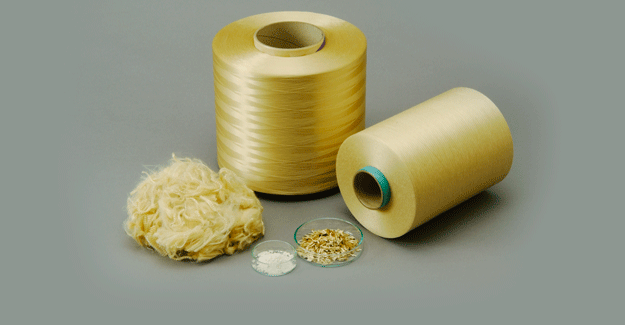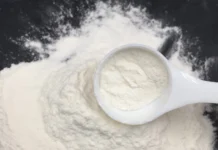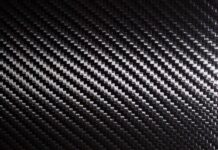BlueWeave Consulting, a leading strategic consulting and market research firm, in its recent study, estimated global aramid fibermarket size at USD 3.8 billion in 2021. During the forecast period between 2022 and 2028, BlueWeave expects global aramid fiber marketsize to grow at a steady CAGR of 7.3% reaching a value of USD 6.3 billion by 2028. Major growth factors for global aramid fiber market include electrical insulation and the production of heat-resistant clothing for firefighters, racecar drivers, military personnel, automobiles, and aerospace equipment. Aramid fibers are used in the construction industry to make corrosion-resistant thermoplastic pipes and fiber-reinforced concrete, which both extend pipeline life and reduce maintenance costs. The expansion of the automotive, aerospace, defense and construction industries is one of the primary factors driving market growth. The market is also growing due to an increasing demand for lightweight materials for personal protective equipment that protects wearers from physical, thermal, electrical, and biological hazards.
Global Aramid Fiber Market – Overview
The aramid fiber market is made up of sales of aramid fiber by organizations (companies, sole proprietorships, and partnerships) that refer to a synthetic fiber whose fiber-forming component is a long-chain synthetic polyamide with approximately 85% of the amide linkages attached to two aromatic rings. Aramid fibers are high-performance fibers made from synthetic molecules with relatively stiff polymer chains. These molecules are linked together by strong hydrogen bonds that effectively transfer mechanical stress, allowing the use of short, low-molecular-weight chains. Aramid fiber is primarily used in composites for sporting goods, aircraft, and military vehicles. It is also used to make clothing fabrics such as fireproof clothing and bulletproof jackets.
The aramid fiber market has grown significantly due to the high demand for lightweight materials in security and protection applications. A key factor supporting the growth of global aramid fiber market during the forecast period of 2021 to 2028 is the increasing demand for lightweight materials that offer significant emission reductions in vehicles. The demand for protective measures brought on by an increase in asymmetric warfare as well as potential substitutes for asbestos and steel are all contributing to the market for aramid fiber’s expansion. The market’s expansion is primarily attributable to rising demand in the automotive and aerospace industries. The market for aramid fiber is flourishing due to the rising demand for the product from various industries, including healthcare, oil and gas, manufacturing, and others, because of stringent government regulations regarding workplace safety. In contrast, the high cost of production, high R&D costs, the non-biodegradable nature of aramid fibers may act as major inhibitors to the growth of aramid fiber market during the forecast period.
Request for Sample Report @ https://www.blueweaveconsulting.com/report/aramid-fiber-market/report-sample
Opportunity: Growing Use of Aramid Fiber in Aerospace and Automotive Applications
Numerous aerospace and automotive applications employ aramid fibers to reduce production costs without compromising the model’s structural integrity, producing more effective finished goods. Many countries are expected to invest more in defense infrastructure development and defense spending to increase security, which will increase the market potential for aramid fiber. As electric vehicles must be light, rising demand from the automotive sector is expected to play a significant role in the market expansion during the forecast period.
Challenge: High Manufacturing Costs
The high costs associated with aramid fiber production and development are expected to significantly constrain the market for aramid fiber over the forecast period. Aramid fibers’ long-term market potential will also be hampered by fluctuating raw material prices. Manufacturers of aramid fiber are investing in the development of new products that are more affordable and sustainable to increase their sales over the forecast period and in the long term.
Impact of COVID-19 on Global Aramid Fiber Market
The global aramid fiber market experienced a significant decline during COVID-19 pandemic in 2020, primarily as a result of slowed R&D due to global lockdowns implemented to stop the spread of coronavirus infections. These limitations made it difficult for aramid fiber companies to manufacture and distribute their products, which caused them to lose a lot of money on the global market. The aramid fiber market is forecast to do well in the post-pandemic era, due to the resuming of numerous industrial activities and the lifting of lockdown restrictions. As the range of aramid fiber applications grows and there is a high demand for lightweight fiber alternatives across all industries, the aramid fiber market is expected to rebound.
Global Aramid Fiber Market – By Application
Security & Protection, Frictional Materials, Industrial Filtration, Optical Fibers, Rubber Reinforcement, Tire Reinforcement, Electrical Insulation, and Others are the application segments of the global aramid fiber market. The security & protection segment led the market in 2021. The product’s increasing use in bullet-resistant and protective clothing, as well as stab-resistant products such as helmets and protective gloves, is expected to benefit the growth of the application segment. Aramid fiber is increasingly being used in aerospace components, such as the primary wing and fuselage structure of new-generation aircraft, landing gear doors, and leading and trailing edge panels. The superior strength, impact resistance, and low weight of the product are expected to result in high consumption.
Competitive Landscape
Global aramid fiber market is fiercely competitive. Prominent players in global aramid fiber market include DuPont, Huvis Corp., Hyosung Corp., Kermel S.A., Kolon Industries, Inc., SRO Aramid (Jiangzu) Co., Ltd, Teijin Ltd., Toray Chemicals South Korea, Inc., Yantai Tayho Advanced Materials Co., and China National Bluestar (Group) Co., Ltd. These companies use various strategies, including increasing investments in their R&D activities, mergers, and acquisitions, joint ventures, collaborations, licensing agreements, and new product and service releases to further strengthen their position in global aramid fiber market.
Contact Us:
BlueWeave Research Blog
Phone No: +1 866 658 6826
Email: info@blueweaveconsulting.com













